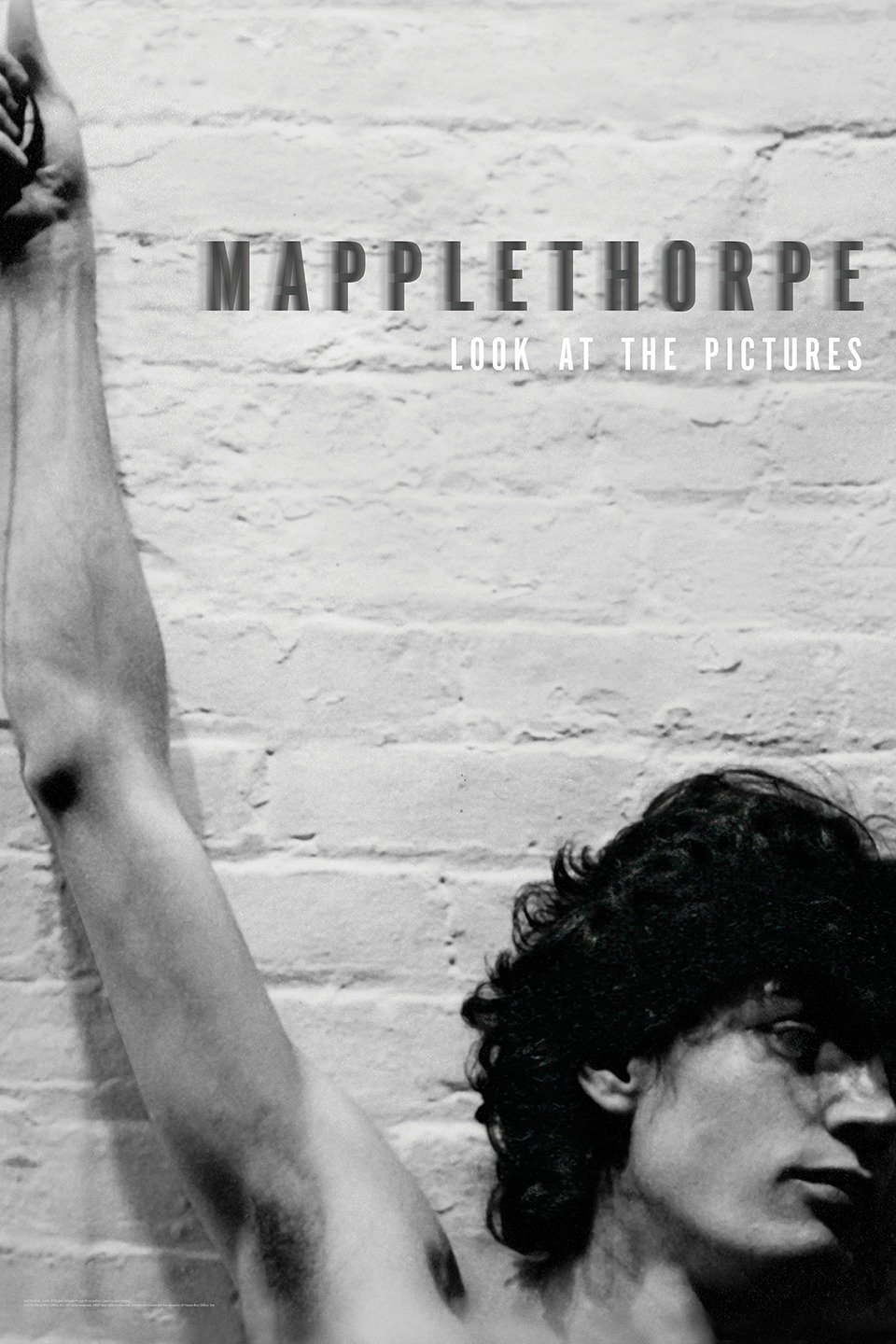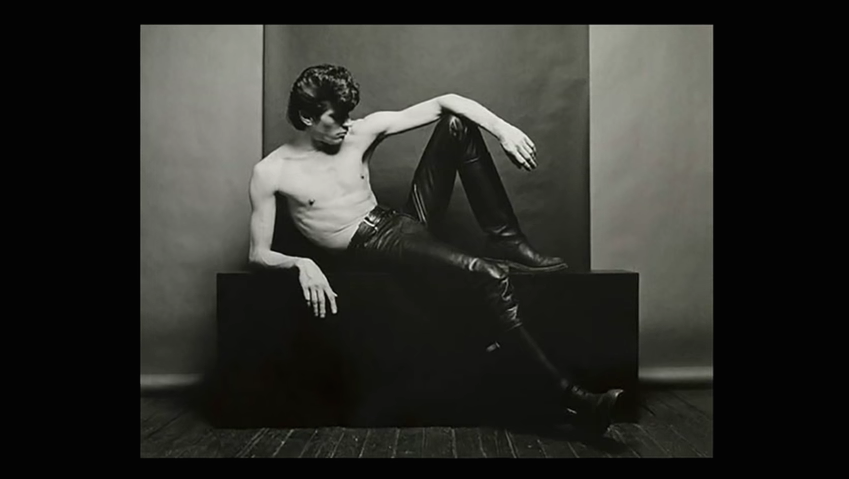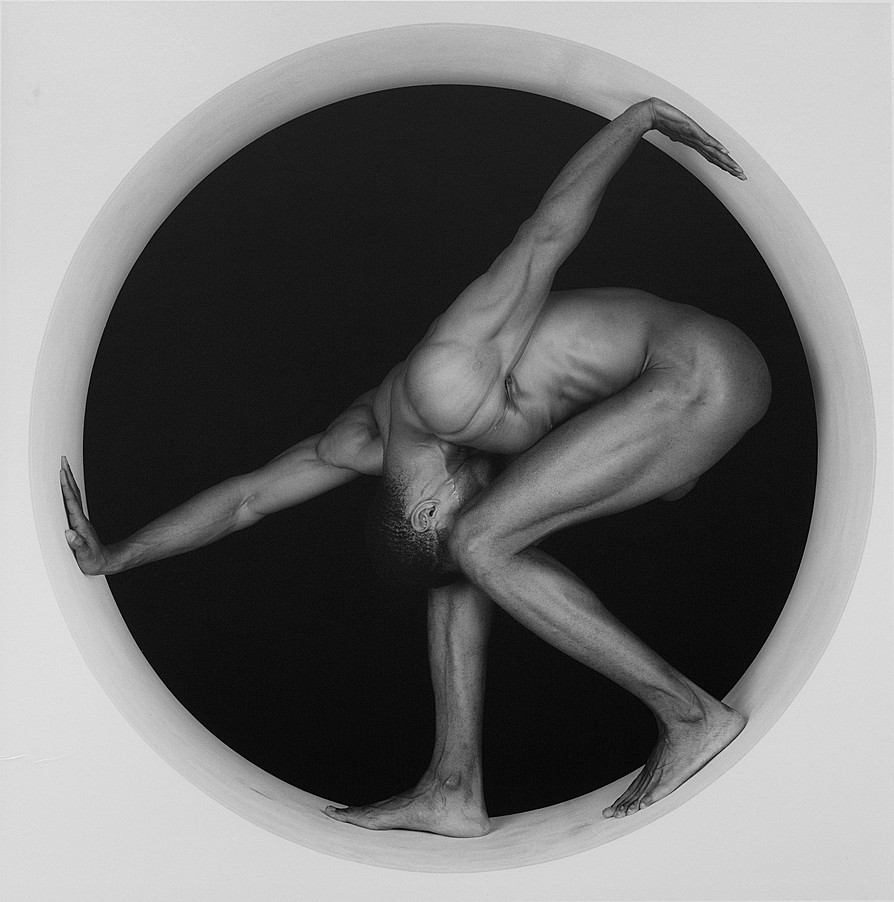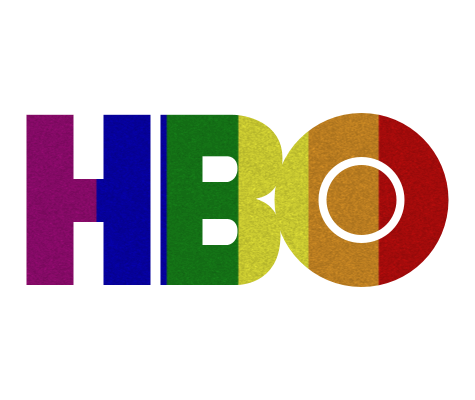HBO’s LGBT History: Mapplethorpe: Look at the Pictures (2016)
 Wednesday, April 6, 2016 at 3:30PM
Wednesday, April 6, 2016 at 3:30PM Manuel is working his way through all the LGBT-themed HBO productions.
 Last week we talked about race in HBO’s LGBT properties while briefly discussing Dee Rees’s Bessie. If there’s one thing media in general (but gay media in particular) needs to work on is intersectionality: any attempt, for example, at framing the gay rights movement as “the new civil rights” movement not only suggests the plight of black people in America has been “won” but it refuses to understand how they intersect in sometimes very troubling ways. This week we're jumping on HBO's most recent release, Mapplethorpe: Look at the Pictures, which aired just this past Monday and which I got to see last week in the big screen. Not only is the doc wonderful, featuring candid interviews with those who knew (and posed for!) him, but it dovetails nicely with these issues of sex and race that we keep discussing.
Last week we talked about race in HBO’s LGBT properties while briefly discussing Dee Rees’s Bessie. If there’s one thing media in general (but gay media in particular) needs to work on is intersectionality: any attempt, for example, at framing the gay rights movement as “the new civil rights” movement not only suggests the plight of black people in America has been “won” but it refuses to understand how they intersect in sometimes very troubling ways. This week we're jumping on HBO's most recent release, Mapplethorpe: Look at the Pictures, which aired just this past Monday and which I got to see last week in the big screen. Not only is the doc wonderful, featuring candid interviews with those who knew (and posed for!) him, but it dovetails nicely with these issues of sex and race that we keep discussing.
The film borrows its subtitle from the famous words Jesse Helms used during a congressional hearing about Mapplethorpe's "pornographic" pictures: "Look at the pictures!" he implored, arguing that one couldn't deny the fact that they were not art. Cannily, this HBO documentary lets us admire plenty of Mapplethorpe's pictures—I didn’t count but the doc is exhaustive, showing us hundreds of photographs, scanned and offered up to us for close inspection.

We get to see both his celebrated portraits (of Patti Smith and Debbie Harry, of Carolina Herrera and Andy Warhol) as well as those “filthy” pictures from his X book that so incensed Helms. As the film chronicles Mapplethorpe’s life (from suburbia to New York, from cunning waif to renowned photographer), it also follows the collective effort of The Getty and LACMA as they mount a joint retrospective of the artist.
It’s easily the most phallic-centric film I’ve covered in this column, outnumbering quite easily the number of full frontal shots of every other HBO movie combined. Even as I’ve hailed the sex scenes in Looking and on True Blood (to name just two), contemporary depictions of gay sex (and really, of sex in general) in mainstream media remain wedded to the idea that a tumescent penis immediately signals a shift into pornography—Mapplethorpe’s main lesson to us, it seems, remains a wholly intellectual one. Time and time again, he tried to remind us of the beauty of the penis and of the ways it need not be such a cause for alarm. Mainstream media, on the other hand, continues to operate under the implicit acknowledgement that male full frontal nudity (and in particular an erect penis) is somehow where one draws the line.
This, of course, becomes an even trickier proposition when, as was the case in his later years (before he died of AIDS complication at the age of 42) he photographed mostly black men. The word most often used to describe this fixation is “exploitative” given the way Mapplethorpe (a white guy) had profited from, quite literally, using black bodies. The documentary, more interested in the way Mapplethorpe pushed past artistic limits of impropriety (his most famous self-portrait features him with a whip up his ass), dances around the issue of race by deferring to one of the photographer’s female black friends from art school who says she disagrees with that critique given how much Robert loved the men he photographed (“And that’s not exploitation to me”). It’s a provocative rebuttal though one which leaves plenty to be discussed.
 Look at the Pictures does give many of Mapplethorpe’s former models a chance to talk about their relationship with the photographer and give insights into these now iconic photographs: inadvertently, the doc offers us what may be the most sustained look at gay black male sexuality in HBO’s history. That it’s filtered through a white artist’s story is perhaps as perfect a distillation of these issues of representation as we’ll ever get.
Look at the Pictures does give many of Mapplethorpe’s former models a chance to talk about their relationship with the photographer and give insights into these now iconic photographs: inadvertently, the doc offers us what may be the most sustained look at gay black male sexuality in HBO’s history. That it’s filtered through a white artist’s story is perhaps as perfect a distillation of these issues of representation as we’ll ever get.


Fun Awards Fact: None yet (I have high hopes for an Emmy nod but then its unabashed embrace of Mapplethorpe’s art may make enough people squirm) but we should take the time to bemoan the fact that directors Fenton Bailey and Randy Barbato have yet to earn any Emmy love for producing what is inarguably one of the best reality tv series competitions EVER: RuPaul's Drag Race. Yes, Bailey & Barbato are the guys behind World of Wonder.
Next week: Larry Kramer in Love & Anger.



Reader Comments (6)
Since I think you're just about done with HBO itself, why not turn this into an intermittent feature and discuss LGBT through the lens of FX or Showtime?
"Inadvertently" is good, Manuel.
I saw the exhibit at LACMA recently and thought it should have been much larger, forgetting about the other part of it at the Getty. (Which I guess I'll be visiting soon.)
I'm a huge fan of Mapplethorpe. I really want to see this doc.
I had this wonderful teacher who took us to see an exhibition when we were like 15. His work blew my mind. I had the catalogue as a poster in my bedroom for many years.
I am keen to see the film because of the artist, but I am usually quite wary of films about photography as I don't think the two artforms gel together particularly well. An exhibit works, obviously, because we can stand and stare for as long as we care to and we can examine up close and notice things we can never hope to spot when fleetingly glimpsed on a screen.
Volvagia, we're nearing the end, indeed! May take a break for a bit but that's a good suggestion.
Glenn, I'd love to hear your thoughts once you get to it. It actually really takes the photography as art aesthetic quite seriously and lingers on photos more than you'd think. Then again, part of what's so great and iconic about Mapplethorpe is that his compositions are so bold and striking, less inviting to contemplation than sudden revelation.
This article about HBO's LGBT history documentary, "Mapplethorpe: Look at the Pictures," is incredibly thought-provoking. It's essential to celebrate and acknowledge the diverse experiences and contributions of the LGBTQ+ community.
One aspect that struck a chord with me was the exploration of relationships and personal dynamics. It reminded me of the importance of maintaining healthy boundaries, especially when dealing with a codependent partner. In fact, I've been navigating a similar situation recently, and I've found helpful resources on how to deal with codependent partner
- it's fascinating how learning to establish healthy boundaries and prioritize self-care can have a significant impact on our relationships and overall well-being.
The documentary's portrayal of Robert Mapplethorpe's life and work offers a powerful glimpse into the complexities of human connections. It prompts us to reflect on our own relationships and consider how we can foster healthier dynamics.Thank you for sharing this insightful article. It's a reminder that while we celebrate diversity and history, we must also prioritize our own emotional well-being. For anyone struggling with a codependent partner, I encourage you to seek guidance and support.